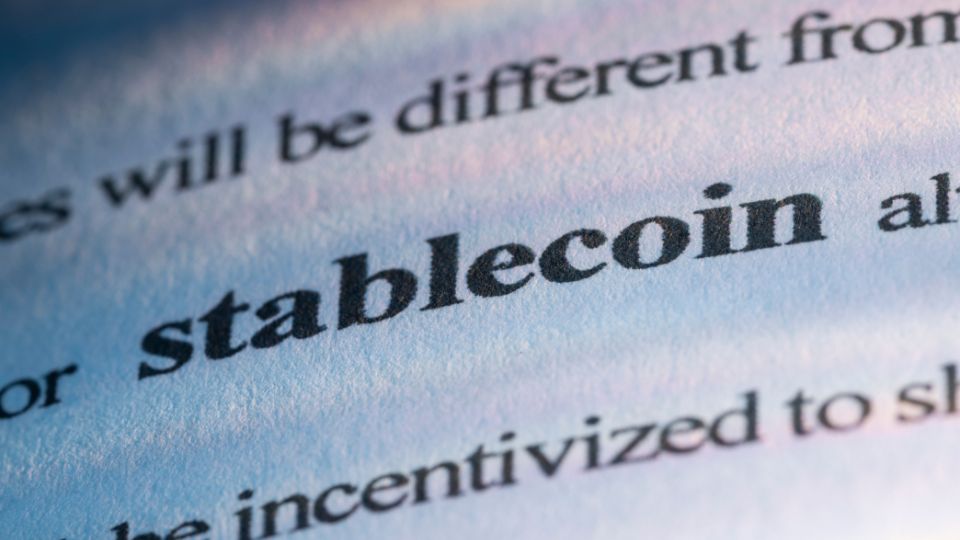The new BRICS Blockchain initiatives signal ominous clouds gathering over the US dollar’s longstanding supremacy in global finance.
The BRICS coalition, comprising the original alliance of Brazil, Russia, India, China, and South Africa, represents a redefinition of the global economic landscape. This group aims to foster economic cooperation, enhance political collaboration, and support equitable global governance, emphasizing the significance of a multipolar world.
In January 2024, following the 2023 BRICS meeting in Johannesburg, South Africa, the group unveiled plans for a momentous expansion. This expansion, described as “historic” by the Chinese President Xi Jinping, included the admission of Egypt, Ethiopia, Iran, Saudi Arabia, and the United Arab Emirates as new member countries.
Expanded BRICS Initiatives
In the context of Russia’s 2024 BRICS presidency, a notable shift towards embracing innovative financial technologies has been articulated, specifically through the exploration of blockchain. Yury Ushakov, the Russian Presidential Foreign Policy Aide, explicitly mentioned this strategic pivot in an interview with TASS on March 4, 2024, stating, “We believe that creating an independent BRICS payment system is an important goal for the future, which would be based on state-of-the-art tools such as digital technologies and blockchain.”
This acknowledgment underscores BRICS’ commitment to enhancing economic independence and streamlining financial transactions among member states, marking a critical step away from traditional financial systems.
The reliance on the US dollar for global transactions has long been a concern for BRICS nations, limiting their economic autonomy and exposing them to vulnerabilities inherent in the international financial system. The move towards a blockchain-based payment system reflects a collective aspiration to diversify financial mechanisms beyond the dollar, aiming to fortify the financial sovereignty and resilience of BRICS countries against external economic pressures.
Blockchain’s Appeal to BRICS
Blockchain technology, a decentralized digital ledger system, offers unparalleled security, transparency, and efficiency in recording transactions across multiple computers. This ensures that any recorded data becomes immutable and resistant to fraud, making blockchain an ideal solution for financial transactions.
Its appeal to BRICS countries lies in the technology’s potential to foster economic independence and enhance security. By eliminating the need for traditional intermediaries, blockchain can reduce transaction costs and increase the speed of cross-border payments, directly aligning with BRICS’ objectives to establish a more equitable global financial ecosystem.
The BRICS nations, in pursuit of alternatives to the Western-dominated financial systems and the US dollar’s hegemony, view blockchain as a key tool in achieving these goals. Initiatives like the Contingent Reserve Arrangement (CRA) underscore this pursuit, aiming to protect against global liquidity pressures and provide a framework for mutual support among BRICS countries.
Furthermore, the potential for a BRICS-blockchain-based payment system represents a significant stride toward economic self-reliance.
Such a system would not only bolster financial transaction security among the BRICS nations but also promote the use of their national currencies in international trade, thereby reducing dependence on the US dollar and enhancing their collective financial sovereignty.

BRICS Blockchain Potential Impact on the Dollar
The BRICS nations’ exploration of blockchain technology for financial transactions could significantly reduce global reliance on the US dollar, a trend amplified by the desire among developing countries to find alternatives to the dollar for trade, investment, and reserves. This shift is largely driven by concerns over the US’s use of its currency as a financial weapon, as seen in sanctions against countries like Russia and Iran.
Shirley Ze Yu, a senior visiting fellow at the London School of Economics, emphasized this point in an interview with Al Jazeera. She stated, “As the US weaponizes the dollar in the Russian and Iran sanctions, there is increasing desire by other developing countries to seek alternative currencies for trade, investment, and reserves, as well as developing alternative multilateral clearance systems outside of SWIFT.”
Yu further elaborated on the economic pressures that motivate this pivot away from the dollar: “As the US Federal Reserve has raised interest rates in recent years, developing countries have widely suffered from paying higher interests on their dollar debt and battling the exchange rate impact from a strong dollar.” This situation has spurred interest in “borrowing in local currencies or other currencies,” underlined by “economic considerations.”
The move towards blockchain by BRICS nations can be seen as a response to these challenges, offering a pathway to more autonomous and resilient financial systems. By potentially creating a blockchain-based payment system, BRICS is not just aiming to decentralize financial power away from the US dollar but also to insulate its economies from the geopolitical use of the global financial system, setting a precedent for other nations seeking similar independence.
Related: Bitcoin Halving: A Comprehensive Guide
Related: What Exactly are Bitcoin ETFs and How Do They Work?
Challenges and Uncertainties for BRICS Blockchain
Implementing blockchain solutions within the BRICS coalition faces a myriad of technical, political, and economic challenges. Technically, the integration of blockchain across diverse financial systems requires significant infrastructure development and harmonization to ensure interoperability, security, and scalability. These technical hurdles are compounded by the varying levels of digital infrastructure maturity among BRICS nations, which could slow down implementation and adoption rates.
Politically, the endeavor to establish a blockchain-based payment system necessitates consensus among member states, each with its own national interests and geopolitical considerations. Achieving alignment on regulatory frameworks, governance structures, and operational protocols presents a significant diplomatic challenge. Furthermore, external political pressures and resistance from dominant financial powers vested in maintaining the status quo of the US dollar’s dominance could impact the initiative’s progress.
Economically, the success of any BRICS blockchain initiatives in reducing reliance on the US dollar hinges on widespread acceptance and use beyond the BRICS nations. Convincing other countries and international businesses to transition to a new system involves overcoming entrenched financial habits and trust in the stability of the US dollar. Additionally, the volatility associated with digital currencies and the regulatory uncertainty in many jurisdictions add layers of complexity to achieving economic viability.
The effectiveness of BRICS blockchain initiatives in diminishing the dollar’s dominance remains uncertain, given these multifaceted challenges. While the potential for transformative impact exists, the path forward is fraught with obstacles that require careful navigation and sustained collaborative effort.
Global Reactions and Implications
The BRICS blockchain payment system represents a pivotal shift in global finance, with varying regional preferences and implications across the EU, LATAM, Asia Pacific, and Africa.
EU
In the European Union (EU), the reception to a BRICS blockchain payment system is likely to be complex, reflecting the region’s intricate web of economic and military ties with the United States, including NATO commitments. The EU’s relationship with the US dollar is not merely financial but is also intertwined with geopolitical considerations.
The euro, as a significant currency in global trade, coexists with the dollar in a delicate balance of competition and cooperation. While the EU might recognize the potential benefits of blockchain technology for enhancing transaction efficiency and security, its response to the BRICS initiative would also need to navigate the strategic implications of potentially reducing reliance on the dollar.
European financial institutions and policymakers might explore blockchain innovations within their systems, motivated by efficiency and autonomy. Yet, they would proceed cautiously, weighing the benefits against the risk of straining the transatlantic alliance that underpins both economic and security frameworks in the region.
LATAM
Latin America (LATAM), with its close economic ties to BRICS countries like Brazil, may show more enthusiasm towards a BRICS blockchain payment system. Nations within LATAM, seeking to diversify their trade partnerships and reduce dependency on the US dollar, might adopt or adapt BRICS’ blockchain technologies to bolster regional trade agreements and enhance financial sovereignty.
Asia-Pacific
In the Asia-Pacific region, the reception could vary widely. Countries like China and India are already part of BRICS, leading the charge. Other nations, particularly those with growing economies and technological infrastructures, such as Singapore and South Korea, may be inclined to explore similar blockchain mechanisms to secure and streamline their transactions, especially if it means reducing reliance on the US dollar and enhancing regional trade.
Related: Chinese Crypto Market Thrives Covertly Despite Crackdowns
Africa
Africa stands to benefit significantly from a BRICS blockchain payment system, given its rich natural resources and burgeoning trade relations with BRICS nations. African countries could leverage blockchain technology to facilitate intra-continental trade and access broader markets without the constraints of dollar-dominated trade finance. This could foster greater economic independence and development, aligning with the African Union’s Agenda 2063 goals for a prosperous and united continent.
Overall, a BRICS blockchain payment system could catalyze a reevaluation of regional financial systems worldwide, promoting a shift towards more localized and blockchain-enhanced trading ecosystems.
Future Indicators to Watch Out For
As BRICS countries continue to explore blockchain technology and its potential to reshape global finance, several key milestones and indicators will be worth monitoring in the coming years. Firstly, advancements in the development and implementation of cryptocurrency-based payment systems within BRICS member states will serve as tangible evidence of progress. The successful establishment of such systems, particularly if they gain widespread adoption and facilitate seamless cross-border transactions, could signal a significant shift in the international financial landscape.
Additionally, the reaction of traditional financial institutions and major global powers, such as the United States and the European Union, will provide insights into the broader implications of BRICS blockchain initiatives. Any resistance or attempts to undermine these efforts may indicate perceived threats to existing economic structures and hegemonic powers.
Furthermore, monitoring the expansion of blockchain applications beyond financial transactions will be crucial. As blockchain technology matures, its potential applications in areas such as supply chain management, digital identity verification, and smart contracts could further enhance the autonomy and efficiency of BRICS economies.
Lastly, observing the response of other emerging economies and regional blocs to the BRICS blockchain initiatives will shed light on the potential for broader collaboration and the emergence of alternative financial networks outside of traditional Western-dominated systems. Overall, tracking these milestones and indicators will provide valuable insights into the evolving landscape of global finance and the potential ramifications of BRICS countries’ blockchain-driven ambitions.





